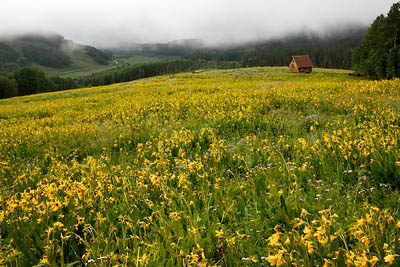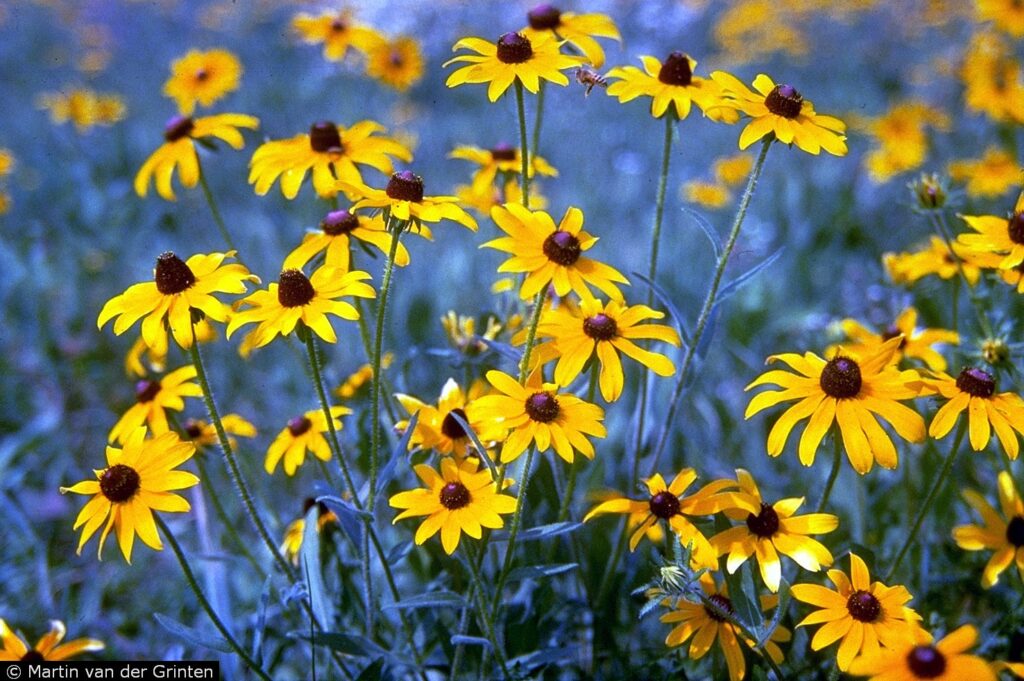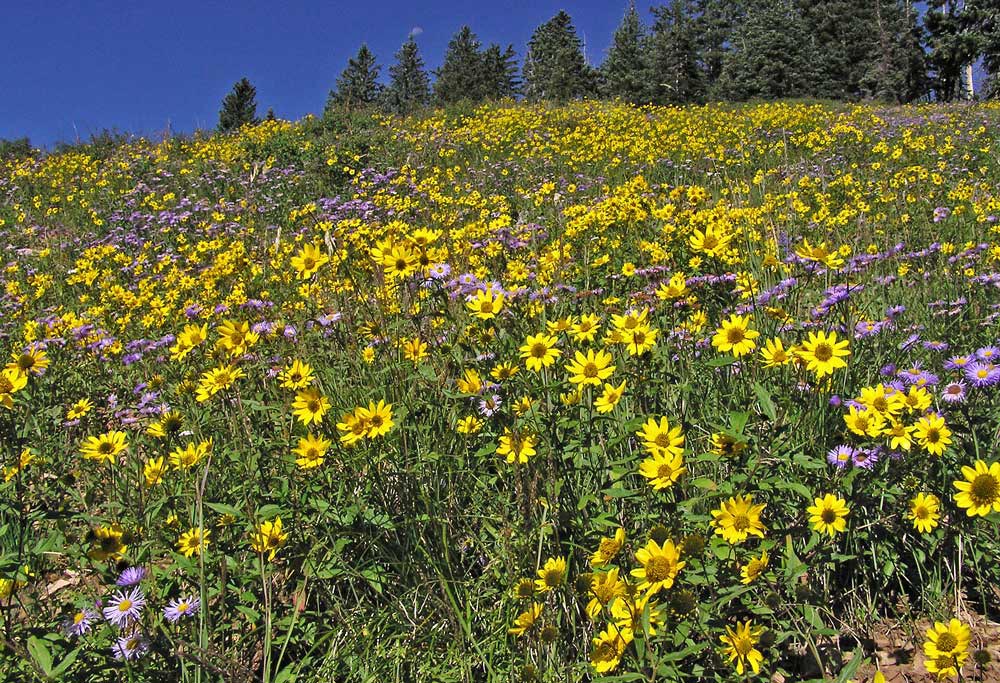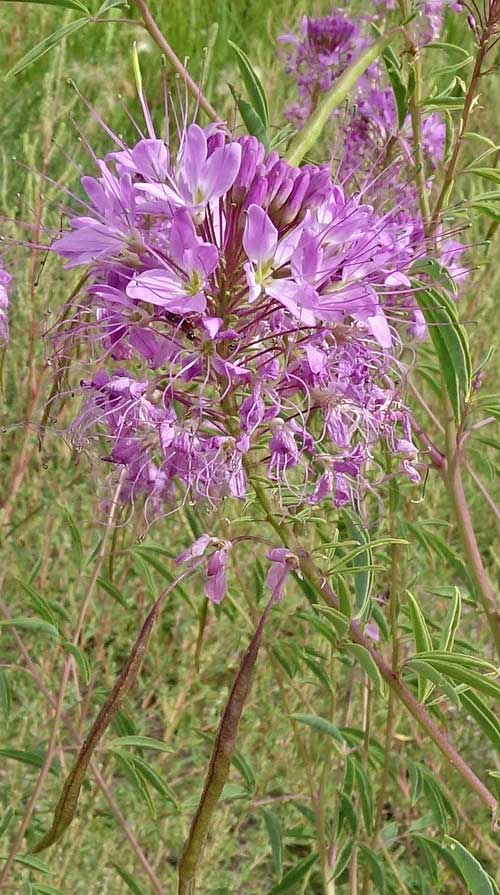By Jonathan Sciarcon*

A fellow Wild Ones Front Range Board member asked me to write an article for this month’s newsletter on “damn yellow composites” with the request that I make it funny. While I appreciate her belief that I can write comedically, the truth is that I was not even aware of the term “damn yellow composites,” (yellow flowers in the Asteraceae family). Thus, when preparing to write this article, I searched the term online and found that many gardeners dislike mid to late season yellow composite flowers. I also realized I have nothing funny or witty to say about this. Instead, I decided it might be best to share my perspective, which is the perspective of a person with no eye for fashion, detail or aesthetics and who came to gardening at the relatively late age of 39.

In many parts of my life, my own preconceived notions of what is good or bad continue to impact how I view and navigate the world. Having started to garden in mid-life after never having taken the time to care about the aesthetic value of plants is an advantage in the sense that I almost solely focus on what a plant does and not how it looks. My relationship to gardening reminds me of Frank Drebin’s comment to Jane in the original Naked Gun film: “Jane, since I met you, I’ve noticed things that I never knew were there before… birds singing, dew glistening on a newly formed leaf, stoplights.” While it’s true that I notice more now, what I notice may be different than someone who grew up gardening. It would certainly be different than someone trained in horticulture. This doesn’t make my views correct, but I do think my perspective may help others learn to love or at least appreciate what we might call damn yellow composite season.

Yellow composites are in the Asteraceae family. Common yellow composites along or near the Front Range include Helianthus annuus (Annual sunflower), Grindelia squarrosa (Curlycup gumweed), Helianthus maximiliani (Maximilian sunflower), Oligoneuron rigidum (Stiff goldenrod), Heliopsis helianthoides (Early false sunflower), Heliomeris multiflora (Showy goldeneye), Rudbeckia hirta (Black-eyed susan), Ericameria nauseosa (Rubber rabbitbrush), and Engelmannia peristenia (Engelmann’s daisy). Please note that I’m omitting many flowers and am including ones with which I have a great deal of experience. These plants are often in bloom in mid to late summer, and sometimes all at the same time. For example, Heliomeris multiflora blooms in my yard from late June to frost and so, at some point, blooms alongside every other plant listed above.

I recognize there are many gardeners who detest yards or fields full of yellow composite plants in bloom, especially when there are no or only a few purple, red, or orange blooms alongside them. If you’re a gardener with this mindset, I want to propose two possible solutions. First, try to recalibrate your gardening goals to focus on function instead of form. Admittedly, I take this farther than most, but it is helpful for me to always remember why I’m personally gardening, which is to support local wildlife. I always try to find a mix of plants that can provide pollen and nectar services to native insects, feed other native animals, host native caterpillars, and manage my property’s watershed. Many native yellow composites are among the best native annuals, biennials, and perennials in one or more of these categories. Helianthus maximiliani, for example, is a tremendous source of nectar for native bees and butterflies and is highly drought tolerant in full sun. It also spreads readily by rhizome and seed and so helps prevent soil erosion while also battling against invasive weeds. Heliomeris multiflora is another sun loving, drought tolerant perennial, which is also an important source of nectar for smaller native bees and pollinating insects. Meanwhile, anyone who has had Oligoneuron rigidum or Ericameria nauseosa in the landscape can attest to their abilities to attract numerous pollinating insects when in bloom. Both also thrive in low water, full sun conditions. Additionally, many of these plants, especially Helianthus sp., Oligoneuron sp., and native Solidago sp. are among the best host plants we have, short of keystone native shrubs and trees. Finally, many of these plants support specialist pollinating insects in our local ecosystems.

Second, there are some cheap and easy ways to add mid to late season color contrast in a yard. I have found that Cleome serrulata (Rocky Mountain bee plant) and Machaeranthera bigelovii (Bigelow’s tansyaster) complement many of the yellow composites I have already mentioned in terms of both form and function. Not that anyone should necessarily take my aesthetic views seriously (after all, I watch the movie Road House whenever it comes on), but I do think that Cleome serrulata and Helianthus annuus look beautiful when planted next to one another. They both feed similar generalist and specialist insects and provide significant support to native birds in early fall. Macharanthera bigelovii pairs especially well with Heliomeris multiflora as the plants grow to similar heights, bloom together for around two months, and both support smaller native pollinators. The water and sun requirements of these plants are also similar. Another option is to incorporate colorful native grasses. In my opinion, if you have full sun you cannot go wrong with Schizachyrium scoparium, which turns from a beautiful blue-green to a gorgeous red in late summer and early fall. The lovely seed heads on Panicum virgatum (Switchgrass) also provide excellent contrast for many yellow composites while providing vertical support for taller plants such as Helianthus annuus and Helianthus maximiliani.
In conclusion, I actually love yellow composites for what they do. George Costanza once said that he would drape himself in velvet if it were socially acceptable. I’m not going to pretend that I love yellow composites at that level, but I wouldn’t mind a yard full of them in mid to late summer. For those who see the value in yellow composites and want a variety of other colors, just experiment! Focus on finding plants that have similar sun and water needs and see what works. Nature is dynamic and our yards and gardens can (and in my opinion should) be as well.
*Jonathan Sciarcon is a Board Member of Wild Ones Front Range Chapter, and he actually is funny!
